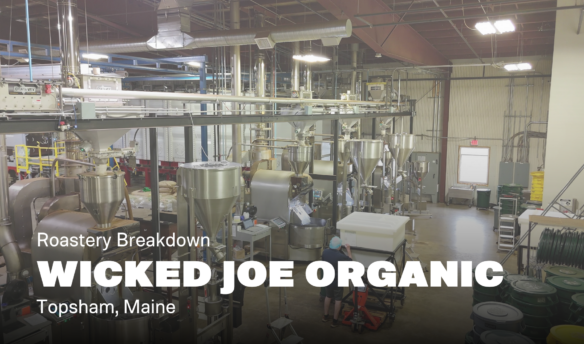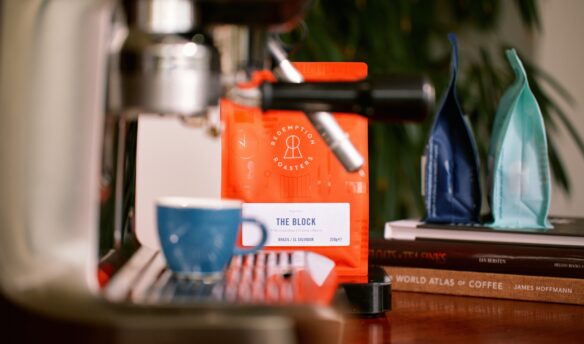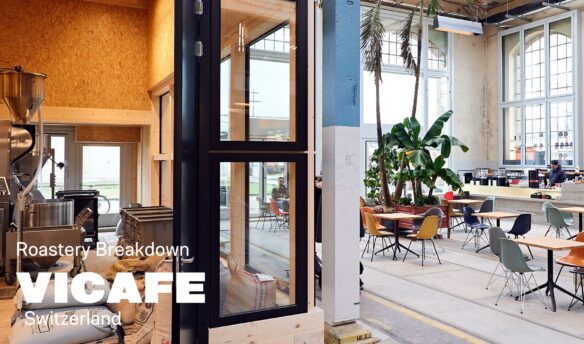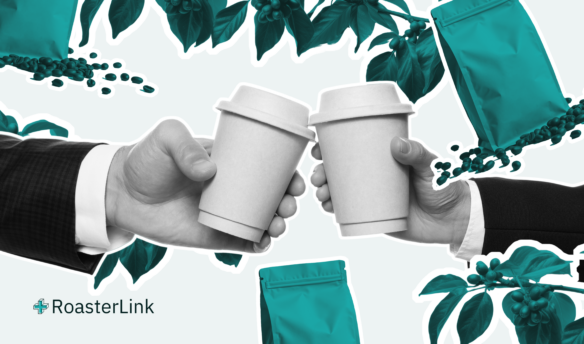This article is sponsored by our partner, Cropster.
Managing inventory for coffee roasters is more than just sourcing the right green beans. Roasters have to be strategic and plan to control expenses and satisfy customer demand.
Waste and freshness are two concerns for coffee roasters, especially those operating online stores. Roast too much, and you risk leaving beans on the shelf. Roast too little or “to order” in an effort to capitalize on freshness, and you risk getting trapped in a cycle of roasting small batches that potentially drive up labor and overhead costs.
The key to managing inventory is to find balance. How do you create roasting schedules and processes to align with both current needs and future demand? Spreadsheets are a good starting point, but they have limitations—they can reflect inaccuracies due to human error and don’t provide real-time updates. Recently, more roasteries have turned to software and data collection as a more efficient way to manage inventory.
When Your Roasting Business Takes Off
Henry’s House of Coffee has been roasting coffee in San Francisco since 1965, but they started to grow their ecommerce business a decade ago. In addition to their roastery, they run a long-standing coffee shop that serves a sizable offline customer base, which adds an extra layer of complexity to the forecasting process.

With in-person and online sales each contributing roughly 45% to total sales and wholesale adding another 10%, the roastery has had to get creative in managing its production and predicting demand. One strategy that has helped Henry’s with its forecasting is offering monthly subscriptions, which now account for 25% of ecommerce orders. “That consistency lets us forecast by the day exactly how much coffee we need to roast, but we roast to order for the remaining 75%, which is very tough,” says co-owner Hrag Kalebjian.
But Henry’s ordering systems weren’t always so streamlined. Before 2020, the Henry’s roasting team relied on manual roasting processes that led to a lot of waste: the team would roast ten coffee varieties daily and packed orders as they came in. But then the pandemic shut down coffee shops, and overnight, sales surged 200%. In 2019, Henry’s bagged and shipped around 400 bags monthly; in March 2020, that number skyrocketed to 1,200 and would reach 1,500 by June.
This surge in demand prompted Kalebjian to reevaluate Henry’s approach to inventory management and production processes. “Green coffee is expensive,” he says, noting that it’s vital to stay organized and keep track of inventory. “You’re not only controlling costs but quality and freshness.”
To meet the spike in demand, Kalebjian tightened protocols to ensure proper coffee rotation and integrated Cropster’s Commerce software into Henry’s roasting operations. This tool connects your Cropster Roaster account with popular ecommerce platforms like Shopify, Beans, or WooCommerce for better production planning.

It tracks your online orders, manages roasted coffee inventory, and calculates exactly how much green coffee needs to be roasted. By subtracting on hand inventory from your roast day calculations, it generates a list for picking and packaging—so you’re only roasting just what you need to fulfill orders.
Kalebjian explains they simplified their coffee production process by creating a labeling system. Once a batch of coffee is roasted, its placed in a bucket with a number generated chronologically by Cropster (the very first batch is #001, next is #002, and so on). When the production team is bagging beans and sees multiple buckets, they know to grab the bucket with the lowest number, which ensures they’re rotating through coffee correctly.
This system prevents confusion during busy times when mistakes are more likely to happen. “We didn’t have those numbers on the buckets in the past, and when people get busy, things get confused,” he says. “People might grab the wrong bucket and it was kind of a mess. Now that we have this system, it makes it super easy.”
Manual Inventory Management is Holding Your Roastery Back
Fabio Gaitan, co-founder of Tintyco, a coffee platform that helps growers roast their own coffee, has been in the coffee industry for over a decade. Initially, when he began roasting, he laboriously did inventory management and forecasting by hand. This involved pulling various reports from Shopify and consolidating them into an Excel spreadsheet for analysis—a time-consuming ordeal.
But his inventory management process dramatically improved after he integrated automation tools like Cropster into production five years ago. “Now, all of the information is available in one click,” says Gaitan.
This integration simplifies predicting online sales and helps reduce coffee waste. When you can track order volumes in real-time, you save money by avoiding excessive coffee roasting, says Gaitan. “Customers don’t buy coffee when it’s old. The first thing they do is check the roast date on the bag when they come to any coffee shop.”
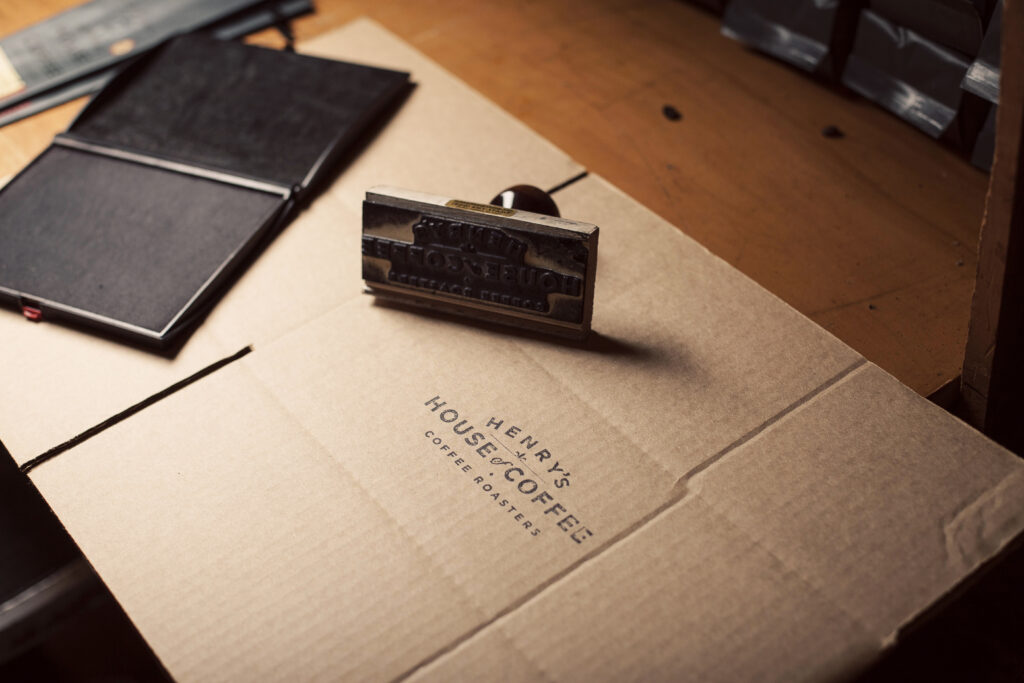
Gaitan emphasizes the need for coffee roasters to embrace automation and leverage data to make better decisions. Certain varieties of coffee may be in high demand during different seasons. By anticipating this demand, you can purchase the coffee you need on time. “When the seasons change, the habits of consumers change too,” says Gaitan. “If you have that data from the previous year, you can predict what kind of coffee is in demand and how much you need to supply your demand.”
Tracking Organic Coffees
Kalebjian faces an additional complexity when dealing with green coffee inventory: USDA organic certification.
USDA organic certification requires coffees to be processed abiding by strict standards from the farm to the roastery. Many roasteries carry both organic and non-organic coffees, which makes inventory even more complex: coffees that are labeled organic must be kept separate from non-organic coffees, and roasters have to show proof that their organic coffees have been sourced, processed, and imported by organically-certified businesses.
To maintain organic certification, Kalebijan says Henry’s is regularly audited, and that auditors require roasters to show proof of organic certification at every step of the supply stream. “They want to see the invoice all the way back to the farm and see that the coffee you roasted was from that specific farm,” he says.
While Henry’s used to track their organic coffee manually in an Excel spreadsheet, things became more complicated when they began introducing more organic coffees alongside their non-organic inventory. Cropster Commerce helped them keep coffees organized and prevented costly mistakes that could jeopardize their certification.
Cropster Commerce does this by making it easy to trace a roasted coffee back to the green shipment it came from. Cropster assigns each green coffee lot a unique number, like PG-0001. Using this ID code in Cropster, roasters can easily access detailed information about the specific green coffee, including its farm source, importer details, and the exact bag it came from. It is important to note that this information must be first added to the green coffee profile by the roaster.

When roasting, specific green coffees are assigned to the roast and generate a “Production Roast” ID, such as PR-0001. Roasters can customize these IDs within Cropster’s Roast Intelligence software. The QR code on a roast label also directly links to the Roast detail page online, where all the relevant details are available when scanned.
Essentially, this method guarantees complete traceability and helps roasters verify certain coffees come from organic producers, while also promoting transparency throughout a roastery. “With Cropster, you’re able to distinguish specific green coffee that you have, whether it’s certified organic or not,” Kalebjian says.
Henry’s got its USDA organic certification in 2021, and the initial setup required inputting a ton of information about the roastery’s green coffee inventory. However, from a user perspective, tracing becomes straightforward because adding in those details is a one-time task—Cropster takes care of the rest of your inventory management. “All that data I was tracking in Excel, Cropster does it in the background. It makes your life much easier when the auditor is there,” Kalebjian says.
With real-time insights and data-driven decision-making, roasters can confidently meet demand without sacrificing quality or profitability. Inventory management tools like Cropster Commerce let roasters fine-tune their production processes, minimize waste, and ensure that every batch of coffee is as fresh as possible.

Sponsored by CROPSTER
Cropster Commerce is a platform built to help roasters connect online ordering tools (like Shopify, Beans, or WooCommerce) to Cropster’s production scheduling and inventory management systems.












